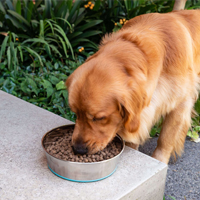To Buy Bactroban Online Visit Our Pharmacy ↓
 Preventing Impetigo: Can Bactroban Be Your Solution?
Preventing Impetigo: Can Bactroban Be Your Solution?
Impetigo is a highly contagious bacterial skin infection, commonly affecting young children but capable of infecting individuals of any age. Caused primarily by Staphylococcus aureus and sometimes by Streptococcus pyogenes, impetigo invades the superficial layer of the skin, leading to the appearance of red sores that swiftly rupture and ooze. These sores eventually form a honey-colored crust and can spread to different parts of the body through touch, clothing, or shared items.
Early signs of impetigo include itchy red or pustular sores that may resemble insect bites. These can swiftly evolve into blisters that burst, exposing raw, moist skin that is prone to secondary infections if left untreated. Impetigo is particularly prevalent in warm, humid environments and can be exacerbated by poor hygiene or skin disruptions like cuts, eczema, or insect bites, which act as gateways for bacteria. Recognizing these early symptoms is pivotal for prompt intervention and preventing the spread of impetigo within communities.
The Power of Bactroban: a Closer Look
Bactroban, known generically as mupirocin, is an antibiotic ointment that has positioned itself at the forefront of treating superficial skin infections like impetigo. This topical antibiotic works by selectively targeting and inhibiting bacterial protein synthesis, effectively halting the growth of the bacteria. Mupirocin has a unique mode of action, distinguishing it from other antibiotics. It's specifically efficacious against Staphylococcus aureus, including methicillin-resistant strains (MRSA), and Streptococcus pyogenes, which are common culprits in impetigo infections.
This medicated ointment comes in various forms, including a cream and nasal ointment, but for impetigo, the topical application is the form of choice. When applied to the infected area, Bactroban swiftly penetrates the skin and begins its assault on the bacterial cell's replication machinery. The ointment does not lose potency in the presence of wound secretions, which means it works effectively even in moist, lesioned skin, providing patients with a robust option for both preventing the spread of infection and treating the localized symptoms of impetigo.
Application Tips for Maximizing Bactroban's Efficacy
When using Bactroban (mupirocin) to combat impetigo, it's crucial that it be applied correctly to promote the best possible outcomes. Begin by cleaning the affected skin with mild soap and water, patting it dry gently. Apply a small amount of the cream or ointment with a cotton swab or a gloved hand, covering the entire area of the infection. It is typically recommended to use Bactroban three times a day for up to 10 days, depending on your healthcare provider's advice. Additionally, ensure that you complete the full course of treatment, even if symptoms improve, to prevent resistance and recurrence.
To maintain the medicine's effectiveness, keeping the affected area clean and avoiding covering it with dressings that don’t allow air circulation is essential unless instructed otherwise by your healthcare provider. Remember not to mix Bactroban with other topical creams or ointments, as this may dilute its strength or cause an unexpected reaction. Monitor the infection closely; if no improvement is observed within 3-5 days, revisit your healthcare provider. Don't share Bactroban with others, as impetigo is highly contagious, and another person's infection might require a different treatment.
The Lifestyle Line of Defense Against Impetigo
Maintaining good personal hygiene is a cornerstone in the fight against impetigo. Frequent handwashing with soap and water, keeping nails short and clean, as well as avoiding close contact with those infected, are crucial steps. It's equally important to ensure that personal items like towels, clothing, and bedding are not shared and are regularly laundered in hot water. This helps to minimize the risk of spreading the bacteria responsible for impetigo. Adding to this, a balanced diet that boosts the immune system together with ample sleep can fortify the body's natural defenses.
Environmental cleanliness also plays a vital role in preventing the spread of impetigo. Disinfecting frequently touched surfaces such as doorknobs, toys, and mobile devices helps to eliminate the presence of staph or strep bacteria in shared spaces. Encouraging children to cover their nose and mouth with a tissue or their elbow when sneezing or coughing can prevent the distribution of infectious droplets. Implementing these habits creates a protective bubble that not only wards off impetigo but also a host of other communicable diseases.
Handling Impetigo at Home: Practical Measures
When managing impetigo at home, maintaining strict hygiene is paramount. Begin by gently cleaning the affected areas with mild soap and water, being careful not to break the fragile blisters. Cover the lesions with loose, breathable dressings to not only protect the skin but also minimize the risk of spreading the bacteria to others. Teaching good hand hygiene to the whole family is crucial, as is not sharing personal items like towels, clothing, or bed linens until the infection is resolved. Moreover, it’s imperative to keep the patient's nails trimmed and clean to prevent scratching, which can exacerbate the condition and transmit the infection.
Consistent laundering of fabrics that come into contact with the infected skin is necessary; using hot water can help eliminate bacteria residing on materials. Additionally, one should discourage scratching or touching the lesions, and if children are affected, consider covering their hands with mittens or cotton gloves at night. The importance of not underestimating impetigo's contagious nature cannot be overstated; prompt action and careful hygiene can prevent its spread to others and promote quicker recovery. Remember that while at-home care can manage mild cases, persistent or severe symptoms warrant medical attention.
Recognizing When Professional Care Is Non-negotiable
While treating impetigo, a common skin infection, at home with over-the-counter options like Bactroban may be effective for mild cases, there are clear signs that medical intervention is essential. If the infection appears to be spreading rapidly, fails to improve after a few days of topical treatment, or if the affected individual develops a fever, these are indicators of a potentially severe infection. Furthermore, excessive redness, pain, swelling, or the presence of pus-filled blisters should prompt immediate consultation with a healthcare professional. These symptoms suggest that the bacteria may have penetrated deeper skin layers or entered the bloodstream, requiring more aggressive treatment such as oral antibiotics or even hospitalization in severe cases.
Patients must also seek professional care when dealing with impetigo among vulnerable populations, such as infants, the elderly, or individuals with weakened immune systems, as they are more susceptible to complications. Those with pre-existing conditions, like diabetes or skin disorders, which can exacerbate the severity of the infection, should not delay in obtaining professional advice. In any of these circumstances, delaying medical care can lead to avoidable complications such as cellulitis or kidney inflammation, known as post-streptococcal glomerulonephritis. Hence, awareness and timely action are paramount in managing the infection effectively while minimizing the risk of more serious health issues.







